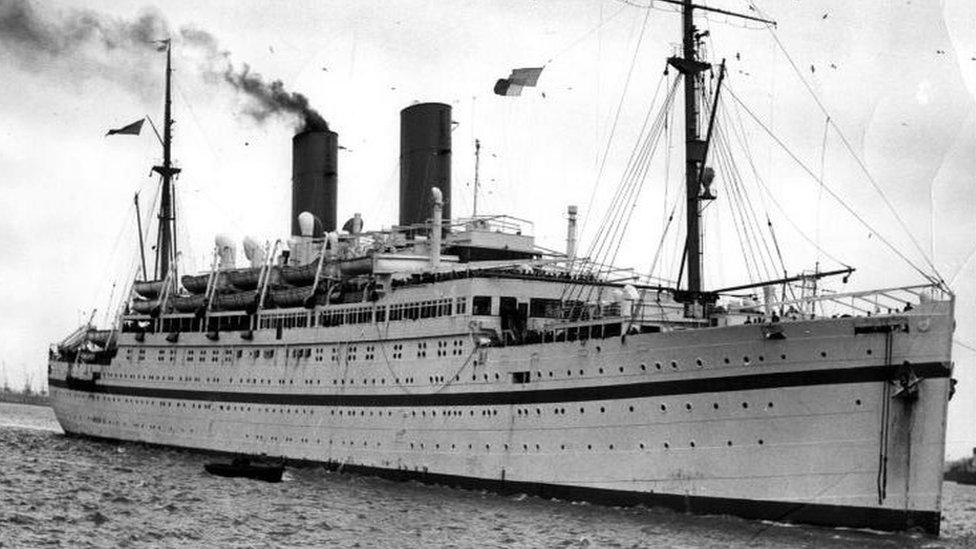Windrush Day: Queen praises pioneers as Waterloo statue unveiled
- Published
WATCH: A Windrush monument is unveiled at Waterloo Station
The Queen has praised the Windrush "pioneers" for their "profound contribution" to British life as a statue to them was unveiled.
The monument, at Waterloo Station, pays tribute to the thousands of people who arrived in the UK from Caribbean countries between 1948 and 1971.
It depicts a man, woman and child standing on top of suitcases and was revealed to mark Windrush Day.
The government gave £1m to fund the statue, designed by Basil Watson.
In a message to mark the occasion, signed Elizabeth R, the Queen said she hoped the statue would "inspire present and future generations" as she sent her "warmest good wishes on this historic occasion".
Windrush Day marks the arrival of Caribbean immigrants to the shores of Britain on 22 June each year - the day HMT Empire Windrush arrived at Tilbury Docks in 1948.
The Queen's grandson the Duke of Cambridge helped to unveil the statue, alongside his wife the Duchess of Cambridge, and also paid tribute to the contributions of the Windrush generation, and their descendants to British life.
"Without you all Britain would simply not be what it is today," he said. "I want to say a profound thank you to every member of that generation and the generations that have followed."
But Prince William also talked about how the "past weighs heavily" on the people of the Caribbean and the Windrush generation.
He said members of the Windrush generation had been victims of racism when they arrived and said "discrimination remains an all too familiar experience for black men and women in Britain in 2022".
The duke referred to the Windrush scandal, which broke in April 2018, and said it still "rightly reverberates through the Caribbean community here in the UK".
The scandal, which saw members of the Windrush generation and their children wrongly detained and even deported, led to the UK government apologising for the deportation threats many faced.
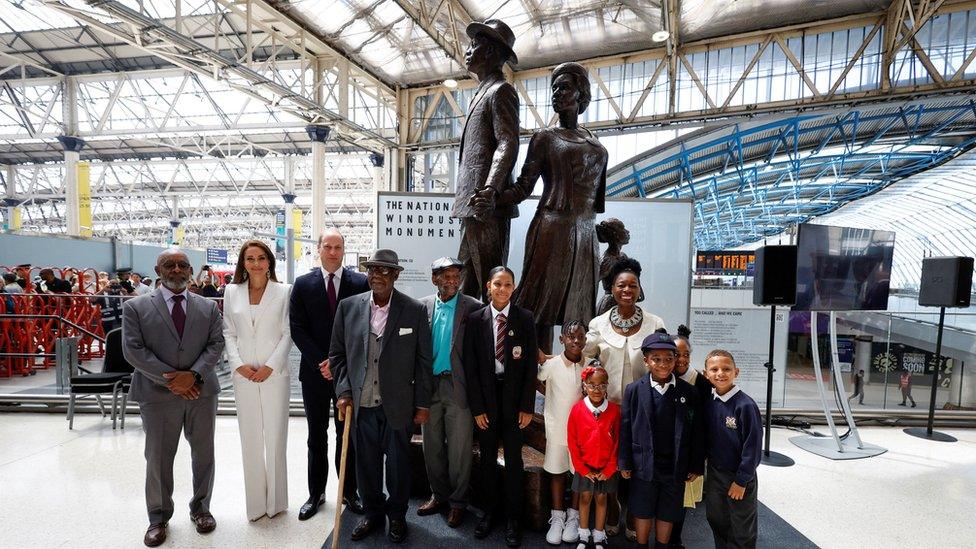
The Duke and Duchess of Cambridge, accompanied by Baroness Floella Benjamin, Windrush passengers Alford Gardner and John Richards and children at the unveiling of the National Windrush Monument at Waterloo Station
Windrush passengers Alford Gardner and John Richards helped the royals to unveil the statue.
Jamaican artist and sculptor Mr Watson has said he was "truly honoured" to have been chosen to create the monument.
The government said the statue would "create a permanent place of reflection and inspiration and be a visible statement of our shared history and heritage".
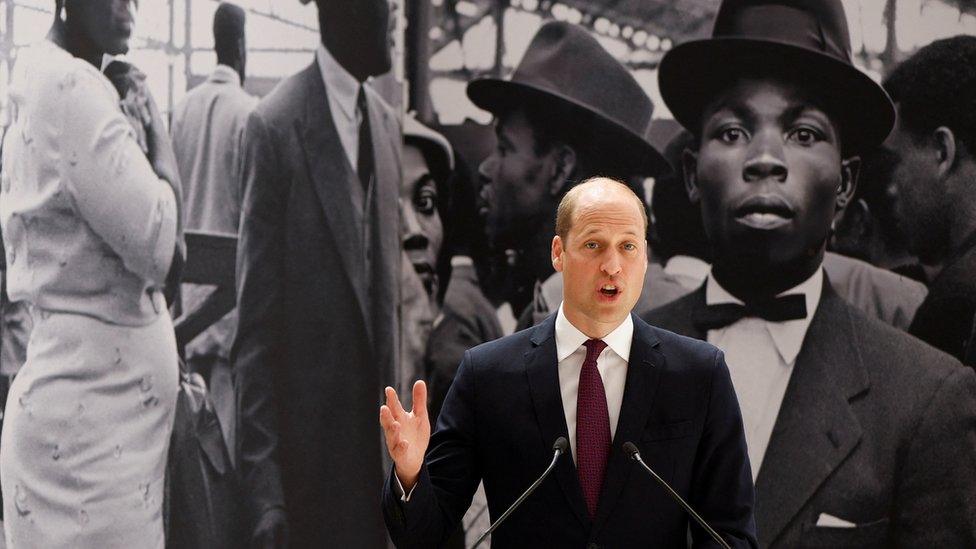
The Duke of Cambridge paid tribute to the "profound contribution" of the Windrush generation to the fabric of British life
Earlier to mark Windrush Day, Prince William and Catherine met young British-Caribbean creatives at the Brixton House theatre in south London, with the duchess trying her hand at photography and the duke chatting to R&B musician Abdoulaziz Lelo Ndambi.
They also met youth workers at Lambeth Council's Elevate programme and attended a workshop led by production agencies Iconic Steps and Oxygen Art.
High-profile names, including actor Lenny Henry and poet Benjamin Zephaniah, have called for next year's Windrush Day to be a "major national moment" to mark the 75th anniversary.
More than 100 leaders across different sectors have signed a joint letter, published in The Times, starting the one-year countdown to the milestone.
The letter reads: "This is not only black history - it is British history. It should be something we all know and commemorate."
Patrick Vernon, convenor of the Windrush 75 network, which is co-ordinating efforts over the next 12 months, said it was a piece of history "every child should learn about at school" and called for it to be commemorated as a major event.
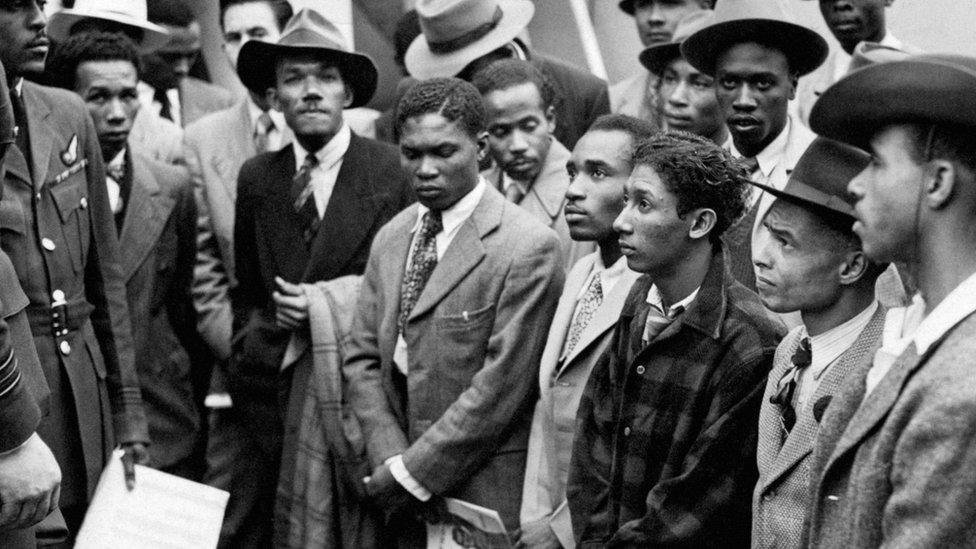
Jamaican immigrants being welcomed by RAF officials after HMT Empire Windrush's arrival in 1948
But not everyone has been supportive of the unveiling of the statue with activist Prof Gus John describing it as "a monument to unforgivable political illiteracy and an entrenched colonial mindset".
In an open letter to Levelling Up Secretary Michael Gove, dated 9 June, declining an invitation to the unveiling, he said the "entire Windrush narrative distorts the history of Caribbean engagement with Britain and of Britain's relentless efforts to keep us out".
Vincent McBean, president of the West Indian Association of Service Personnel, supported the creation of the memorial but said it could have been located in a better place.
"In the heart of Brixton is Windrush Square, what would have been more befitting for it to have been put in the square," he said, adding that it had been Lambeth Council which had initially embraced those who arrived from the Caribbean.
The government says the location was chosen because thousands of members of the Windrush generation passed through Waterloo Station on their way to start new lives across the UK.
They are known as the Windrush generation, in reference to the HMT Empire Windrush, one of the ships that carried them to the UK to fill labour shortages, in the first wave of Commonwealth immigration.
Under the 1971 Immigration Act, all Commonwealth citizens already living in the UK were given indefinite leave to remain.
But thousands of the Windrush generation arrived in the UK as children and did not have official documentation. Following immigration law changes in 2014, many were told they were in the UK illegally, despite living and working in the country for decades.

AN APPLE A DAY: How the humble apple can help you live longer
FOOD ADDICTION: Ultra-processed food and the global obesity pandemic

- Published15 October 2021
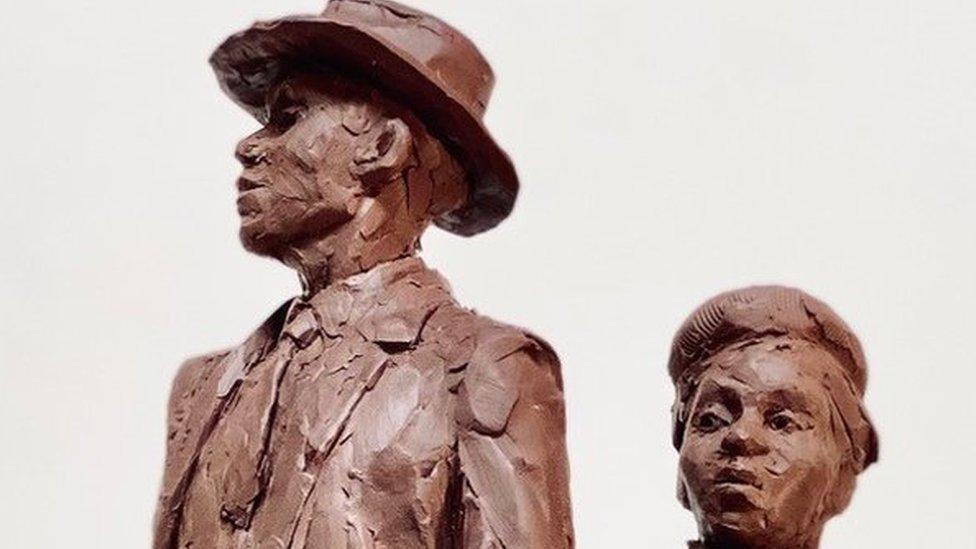
- Published31 May 2022
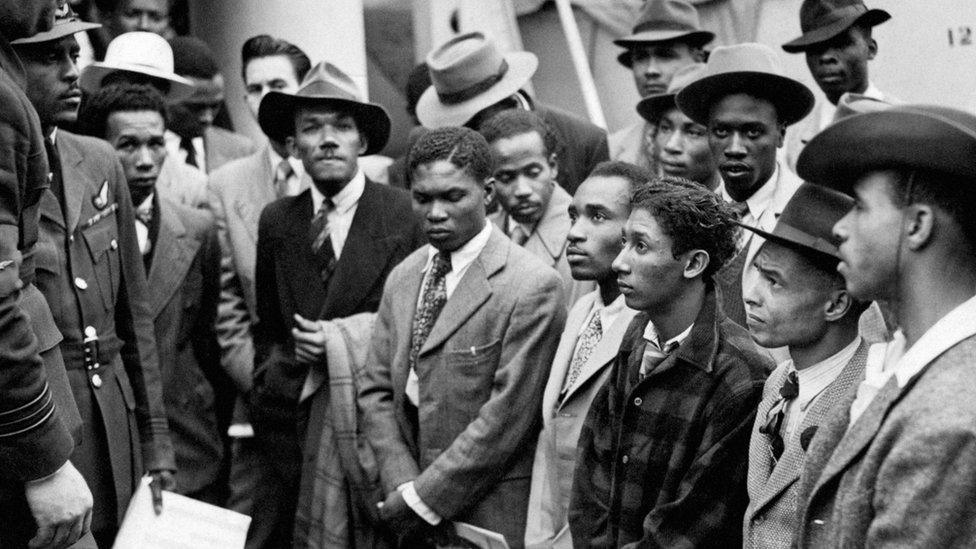
- Published24 November 2021

